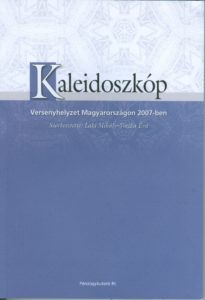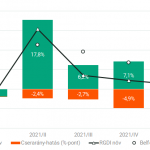 Kiadvány letöltése
Kiadvány letöltése
THE HUNGARIAN LABOUR MARKET 2015 Fazekas Károly, Varga Júlia
The Hungarian Labour Market Yearbook series was launched fifteen years ago by the Institute of Economics of the Hungarian Academy of Sciences with support from the National Employment Foundation. The yearbook presents the main characteristics of the Hungarian labour market and of the Hungarian employment policy, and features an in-depth analysis of a topical issue each year. From the outset, the editorial board has striven to bring relevant and us¬able information on trends in the Hungarian labour market, the legislative and institutional background of employment policy, and up-to-date findings from Hungarian and international research studies to policy makers, civil servants, municipalities, NGOs, higher education and research institutions, the press and electronic media.
Continuing our previous editorial practice, we selected an area that we considered especially important from the perspective of understanding Hungarian labour market trends and the effectiveness of evidence-based policies. Thus, this year the focus is on public works in Hungary.
Tartalom
A könyv letölthető:
egy file-ként pdf-ben vagy fejezetenként:
ContentsForewordThe Hungarian Labour Market in 2014In Focus: Public WorksIntroduction1. The background and international experiences of public works programmesk1.1 Public works programmes in Slovakiak1.2 Temporary public works programmes in Argentina: Lessons learnedk1.3 Scandinavian public works programmes2.1 The institutional and legislative context of public works schemes: a historical owerview2.2 Survey-based and administrative data on public works2.3 Public works programmes in the public employment system, 2011-2013 – basic facts2.4 The values of public work organisers and public workers2.5 Public workers in the legal labour market2.6 The composition of entrants to public works, 2011-20122.7 Spatial inequalities of public works employment2.8 Winter public works2.9 Labour market situation following exit from public works2.10 Where do public workers work?ReferencesLabour market policy tools February 2014-April 2015Statistical dataIndex of tables and figures








